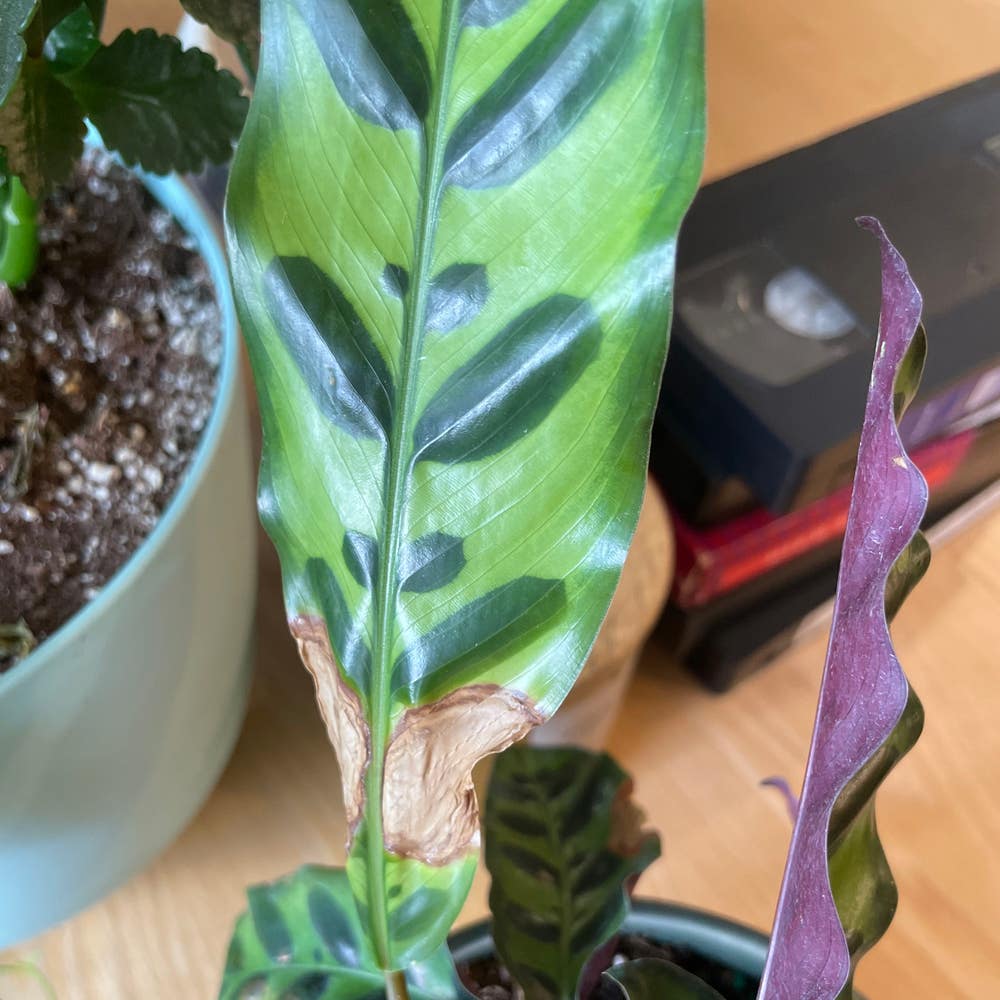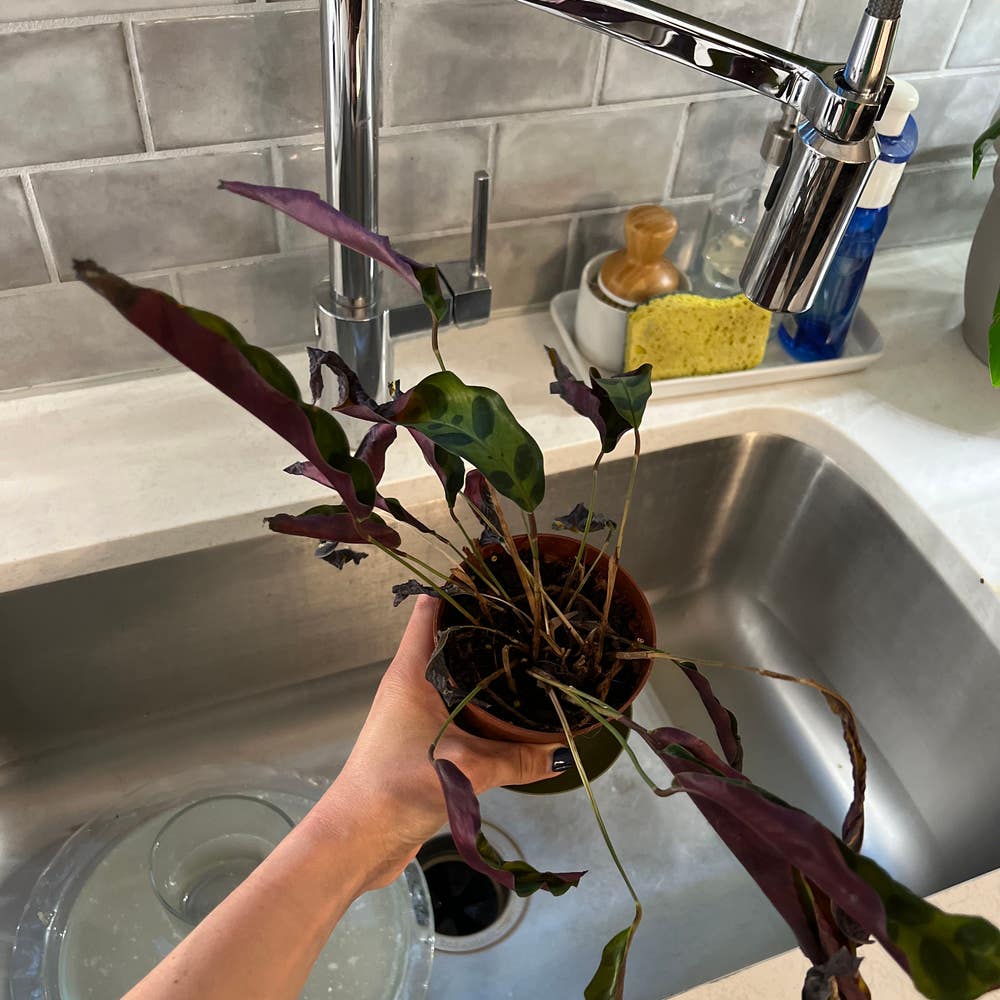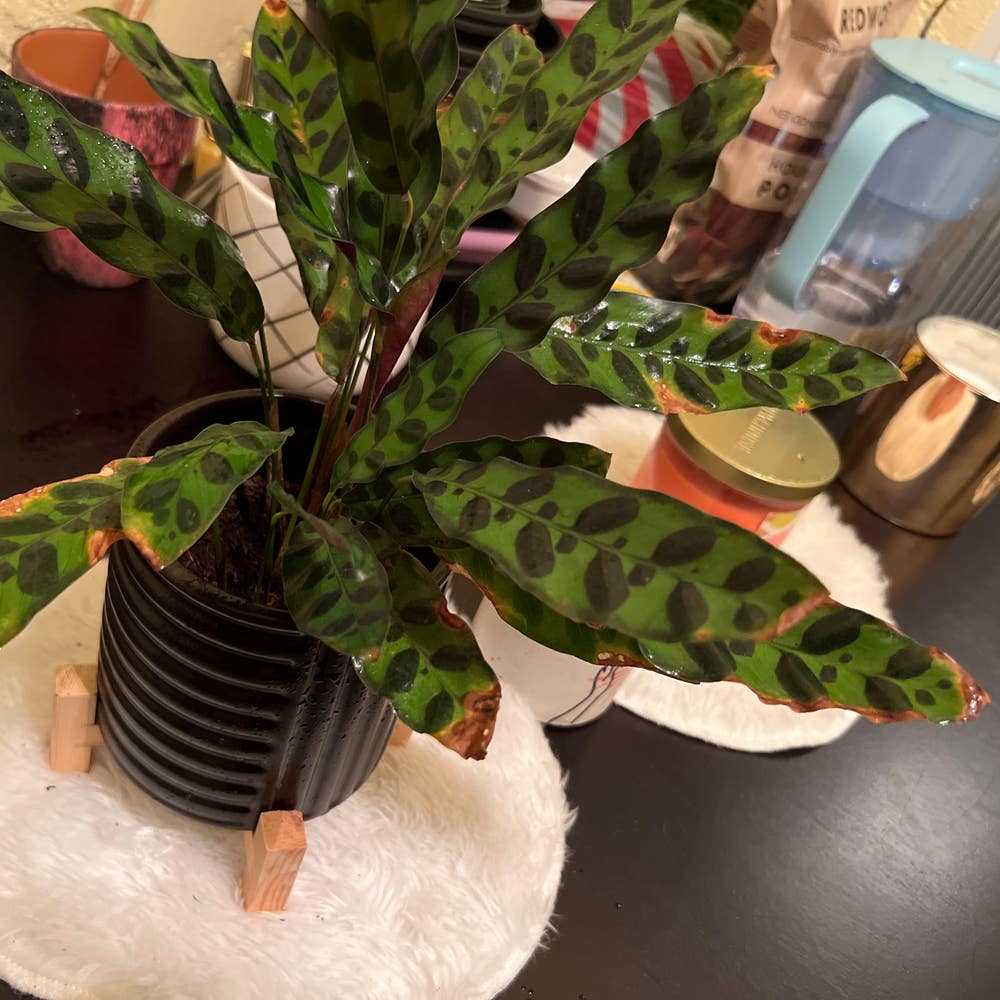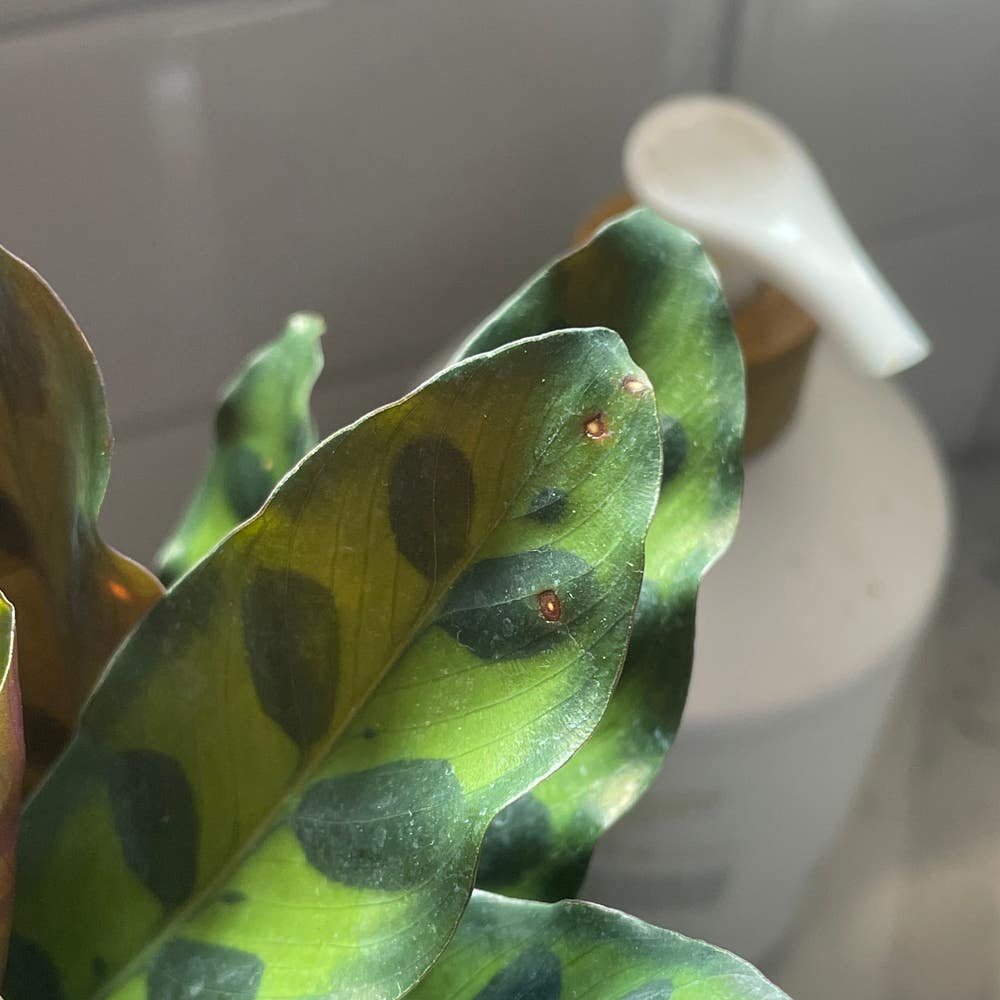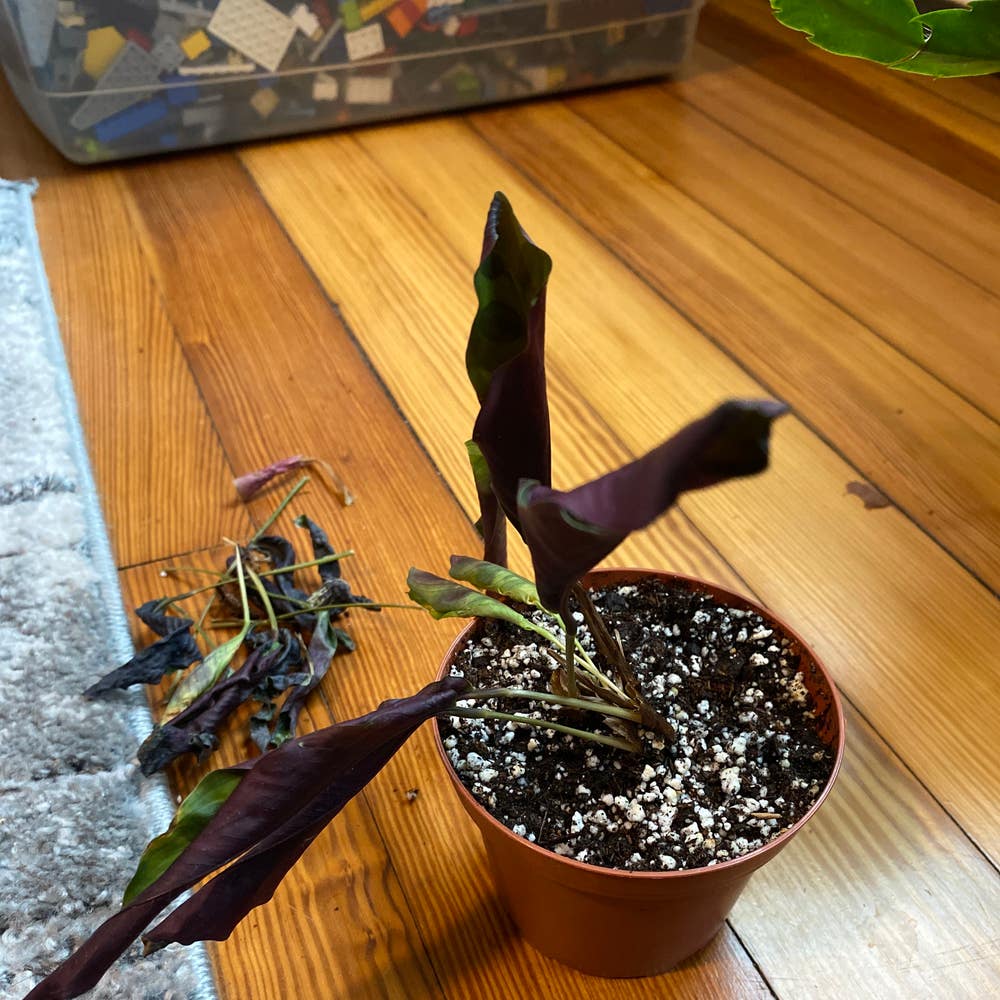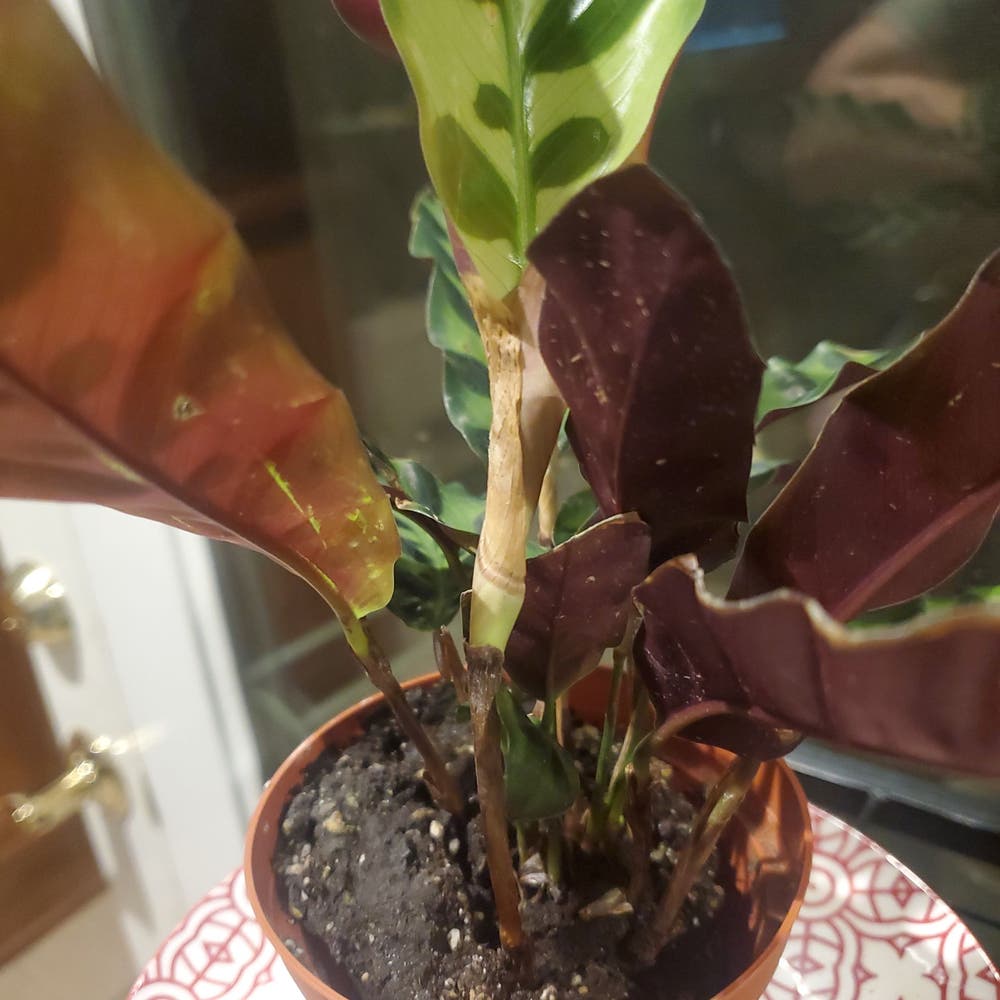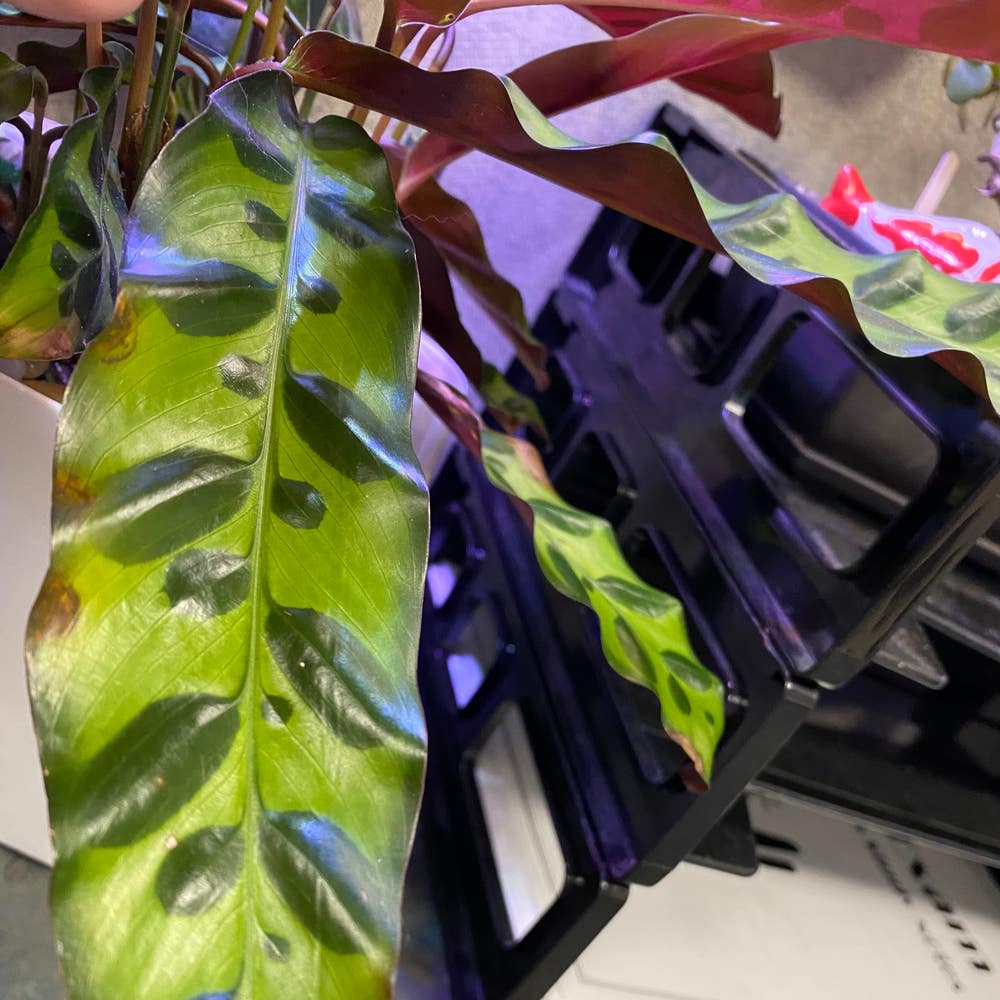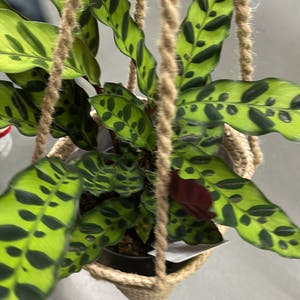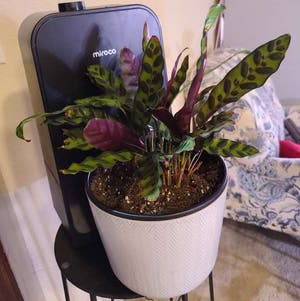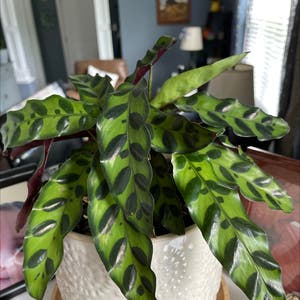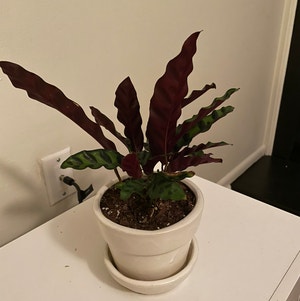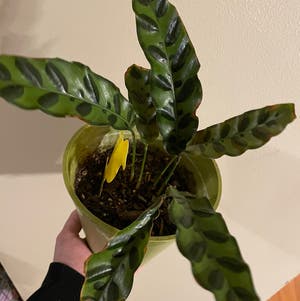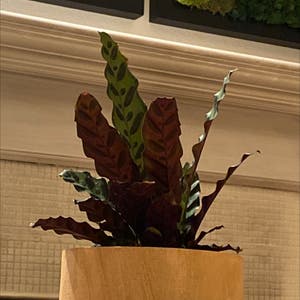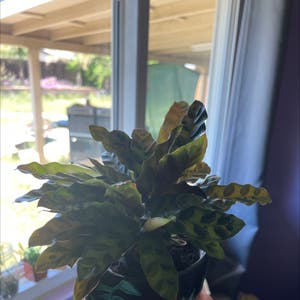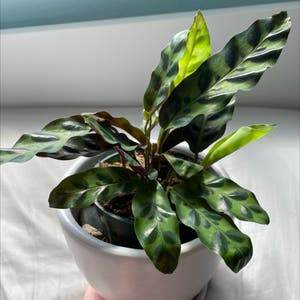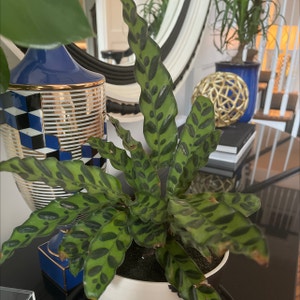
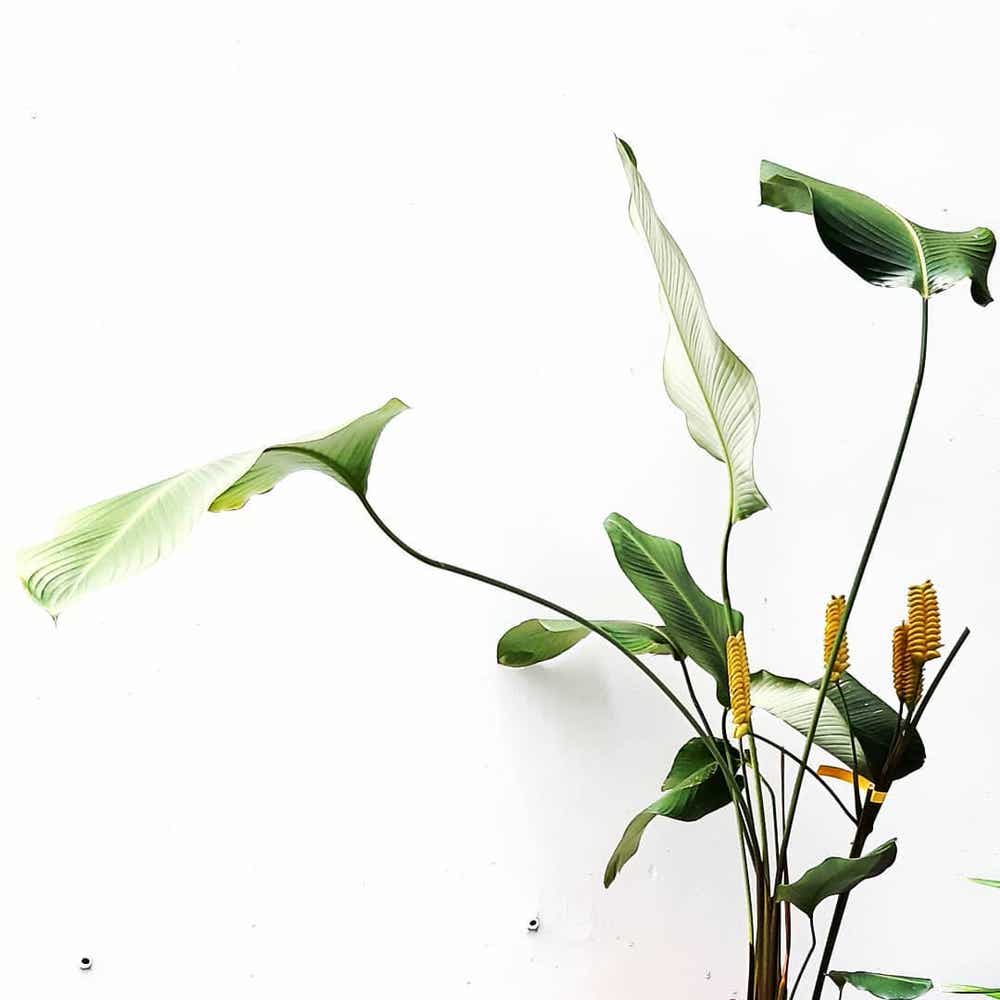



































Calathea Crotalifera

4.5 out of 5 (24 experiences)
 Large, lush leaves
Large, lush leaves
 Browns easily
Browns easily
Also known as
Rattle Shaker, Rattle Shaker, Rattlesnake Plant, Rattlesnake Ginger and Yellow Rattle Shaker
Taxonomy

Calathea crotalifera
Calathea
Marantaceae
Zingiberales

How to care for Calathea Crotalifera
How often to water your Calathea Crotalifera

every 9
Calathea Crotalifera needs 0.5 cups of water every 9 when it doesn’t get direct sunlight and is potted in a 5" pot.
Use our water calculator to personalize watering recommendations to your environment or download Greg for more advanced recommendations for all of your plants.

Water 0.5 cups every
9
Finding light for Rattle Shaker in your home

a window
Calathea Crotalifera may have difficulty thriving, and will drop leaves 🍃, without ample sunlight.
Place it less than 3 feet from a south-facing window to maximize the potential for growth.
Select your region to see how the current weather in your area affects the placement of Calathea Crotalifera in your home 🏡.
How to fertilize Calathea Crotalifera

Most potting soils come with ample nutrients which plants use to produce new growth.
By the time your plant has depleted the nutrients in its soil it’s likely grown enough to need a larger pot anyway.
To replenish this plant's nutrients, repot your Calathea Crotalifera after it doubles in size or once a year—whichever comes first.
-
Too close to the window? My new rattle shaker has some brown patches on its leaves. What could this be? #Calathea
-
Is it OK to trim the roots when re-potting? #Calathea
-
I need help with this guy . He is dying so fast . Any advice anyone has would be greatly appreciated #Calathea
-
The tips of my leaves are yellowing and spreading the rest of the leaf. What's the most common cause of this? #Calathea
-
SOS My poor rattle shaker…. Been following watering instructions! Any idea? #Calathea
-
Does anyone know what is going on with her leaves? She’s thriving otherwise and has some new leaves coming in #Philodendron
-
Any thoughts on what this might be? It’s a new plant. It was isolated for a one week and has one little watering.
-
Help! My leaves are curling from the sides and have brown on tips and sides. The soil is moist and it is getting enough water and light. No root rot smell. Maybe I over firtilized?Any ideas?? #Calathea
-
What is wrong? My sweet rattle plant has several leaves that have turned brown this is a new plant. I had a dracana with spot disease could this be related? I've been watering per greg recs and it is in bright indirect light.
-
I’ve noticed over the past couple of weeks my rattlesnake plant starting to get these spots on the edges. Any idea if this is some issue with watering or too much light, or something else?
Care Summary for Calathea Crotalifera

Calathea Crotalifera
 Greg recommends:
Greg recommends:
 Water
Water
0.5 cups every 9 days
 Placement
Placement
< 3ft from a window
 Nutrients
Nutrients
Repot after 2x growth
Based on the 4” pot your plant is in, and that it doesn’t get direct sunlight.

What other plant parents say
 Large, lush leaves 12
Large, lush leaves 12
 Browns easily 9
Browns easily 9
 Survivor 8
Survivor 8
 Fast grower 8
Fast grower 8
 Easy to propagate 1
Easy to propagate 1
 Blooms easily 1
Blooms easily 1





 05/01/2021
05/01/2021
I absolutely adore my rattlesnake plant, the leaves are stunning and won’t brown as much if well cared for! I take mine in the bathroom with me when I shower so it can spend some time in the humidity. Make sure you water it with filtered water- hard tap water can make them kind of moody.
Personally, I keep mine out of direct sunlight and just pretty close to a window, and it maintains its pattern well. It grows quicker than I expected, but not too fast!! My absolute favorite.
 Browns easily
Browns easily
 Large, lush leaves
Large, lush leaves

 Trending in your area
Trending in your area
 Similar to Calathea Crotalifera
Similar to Calathea Crotalifera
✨ Discover rare plants

Betel

Stomatium acutifolium

Cleistocactus icosago…

Thelocactus macdowell…

Graptoveria 'Douglas …

Stanhopea tigrina

Begonia hydrocotylifo…

Aloe 'Lavender Star'

Philodendron 'Gabby'

Sedum 'White Diamond'

Kilimanjaro Plant

Milky Widow's Thrill

Marquise de Sevigne

Treasure Flower

Astroloba congesta

Rainbow Echeveria

